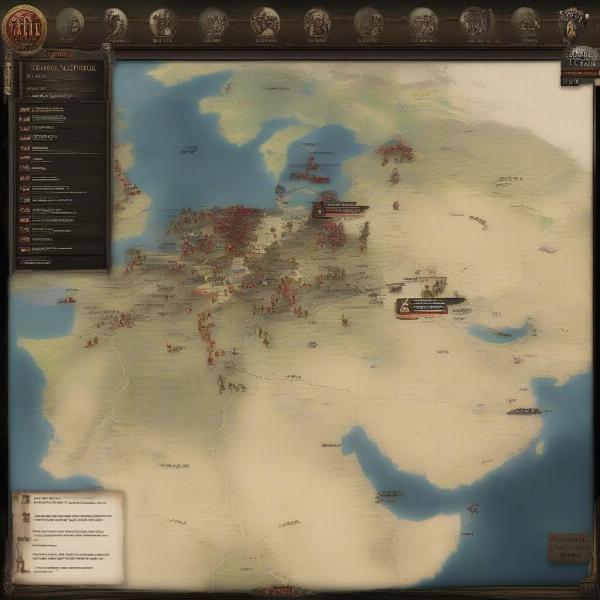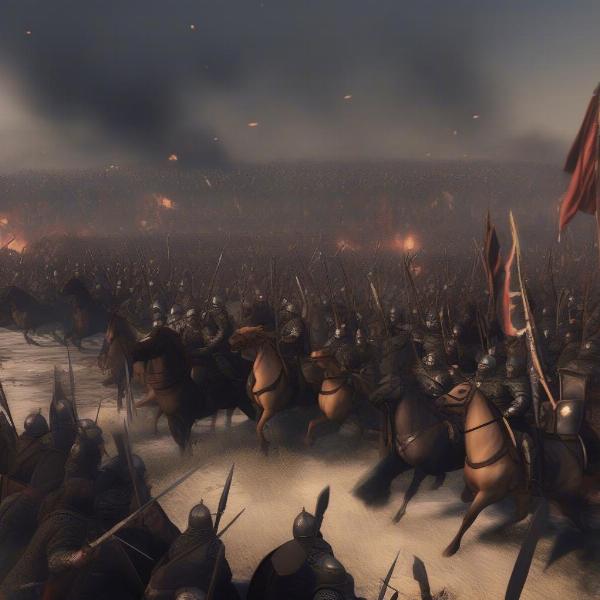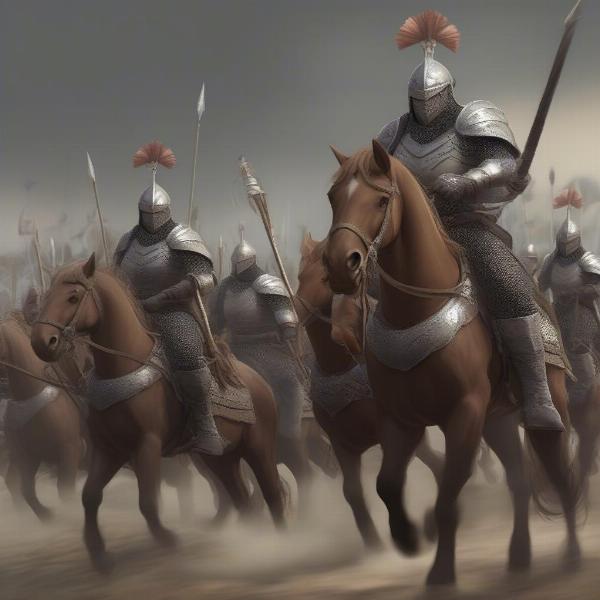Here at supremeduelist.blog, we strive to bring you the most in-depth analysis of strategy games, and today we’re delving into the brutal world of the Total War Attila game. This title, a significant entry in the Total War series, plunges players into the chaotic era of the Migration Period. We’ll explore its mechanics, strategic depth, and why it continues to captivate players.
Attila: Total War stands as a testament to Creative Assembly’s ambition, attempting to capture the sheer brutality and desperation of the Dark Ages. It’s not just another historical strategy game; it’s a survival experience where empires crumble and hordes ravage the land. In this article we will examine what makes this title stand out.
The Setting: A World on the Brink
The Total War Attila game is set in 395 AD, a time of upheaval and unprecedented change. The Roman Empire is fractured, barbarian tribes are on the move, and the terrifying Huns are emerging from the East. This backdrop provides a unique and challenging setting for players. Unlike other Total War titles, Attila forces players to confront a world in decline, where survival often means making brutal decisions. It’s not about grand conquests, but often about desperate defense and managing societal collapse. The game masterfully encapsulates a sense of looming dread and inevitable destruction.
 total war attila game map
total war attila game map
Barbarian Invasions and the Rise of the Huns
The primary threat in Total War Attila game isn’t just other factions; it’s the relentless advance of the Hunnic horde. This dynamic shifts the strategic focus, forcing players to constantly adapt to the mounting pressure. Playing as a settled faction means contending with increasingly frequent raids and migrations, while playing as a nomadic horde means maintaining your momentum for survival. The Attila event isn’t just another enemy, it is the very embodiment of the end of civilization. Players need to be smart about using their resources as the odds are stacked against them. This concept is explored in similar fashion when comparing total war civil war game to other games in the series.
Core Gameplay Mechanics
Attila maintains the core Total War gameplay of turn-based campaign strategy and real-time tactical battles, but with several crucial twists. The game emphasizes environmental and societal factors. Settlements are not just resource points, they’re vulnerable to climate change and disease. The concept of “Razing” settlements is also much more prevalent. As the world descends into chaos, there is an underlying theme that civilizations will be torn down and forgotten, especially with an aggressive AI.
The Importance of Economy and Logistics
In this harsh setting, maintaining an economy that can sustain your armies is essential. Food becomes a crucial commodity that needs constant monitoring and management. The game also introduces elements like population migration, making the movements of civilian populations a vital factor for survival. These changes force players to look beyond traditional Total War strategies to adapt to a more demanding environment. Managing corruption, public order, and sanitation can feel almost as stressful as combat.
 total war attila battles scene
total war attila battles scene
The Strategic Depth of Diplomacy
Diplomacy in the Total War Attila game is crucial, though often fraught with peril. Factions will be naturally inclined to engage in opportunistic wars, and allies are often unreliable. The game presents an atmosphere where alliances are constantly on the brink, and treachery is common, making each diplomatic move a significant gamble. When we look back at a title like shogun 2 was the last good total war game, the focus on diplomacy was more stable, unlike the world in Attila.
Factions and Playstyles
Attila offers a diverse range of factions, each with its own unique challenges and playstyles. From the beleaguered Roman Empires trying to hold their ground to the nomadic hordes sweeping across the steppes, the game caters to a wide range of strategic preferences. The player choices directly affect how you interact with the world.
Playing as the Roman Empires
The Roman Empires, both Western and Eastern, start in a difficult position, facing internal dissent, financial instability, and external threats from all sides. Survival often involves sacrificing territory, consolidating power, and making shrewd political alliances. They may be the “strongest” starting factions, but the sheer number of threats can overwhelm even the most veteran of players.
The Rise of Nomadic Hordes
Playing as nomadic factions like the Huns, on the other hand, involves constantly moving, razing settlements, and amassing loot to support their war machine. This playstyle rewards aggression and offers a distinct contrast to the traditional “settle and build” gameplay of other factions. These forces present a major hurdle for any empire looking to rebuild.
“The core brilliance of Attila lies in its depiction of a world on the edge,” says Dr. Evelyn Reed, a historian specializing in the Late Antiquity period. “The game’s mechanics accurately reflect the societal and environmental pressures of the time, forcing players to think beyond traditional conquest.”
Why Total War Attila Remains Relevant
Despite being released in 2015, Total War Attila game continues to be a favorite among Total War fans. Its challenging gameplay, unique setting, and intense atmosphere set it apart from other entries in the series. The game provides a genuine test of skill, forcing players to contend with not just enemy armies, but also internal struggles and societal breakdowns. The game’s historical accuracy, while not perfect, greatly adds to the overall immersion, pushing the player to understand why the period was so harsh.
 total war attila hunnic armies
total war attila hunnic armies
The Legacy of Attila
Many fans consider Attila to be one of the more brutal and challenging titles in the series. It’s a far cry from the more stable and grand narratives of other Total War games. This is why it has become a cult classic among hardcore players. The game was not just a visual spectacle, it also provided a unique setting and unique narrative that continues to entice players years after release.
“Attila’s strategic challenge is unmatched,” claims Mark Thompson, a prominent strategy game reviewer. “It’s not just about battles; it’s about managing an entire society collapsing around you.”
Final Thoughts
The Total War Attila game is more than just a historical strategy title; it’s an experience that throws players into a desperate fight for survival against the backdrop of a collapsing world. Its unique mechanics, challenging gameplay, and diverse factions offer a deep and rewarding experience for anyone looking for a strategic challenge. If you’re interested in exploring a similar era in a grand strategy format you can take a look at our ranking the total war games for our take on the entire series. For those seeking something different than the usual formula, Attila still stands out as a must play.
If you have ever wondered what other titles have made the cut within the series, you can always check out our total war list of games. Here at supremeduelist.blog we strive to bring you the best analysis and insights into the strategy genre. We encourage you to share your thoughts and experiences with Total War Attila in the comments below, and don’t forget to check out our other content on all things strategy gaming.
Leave a Reply